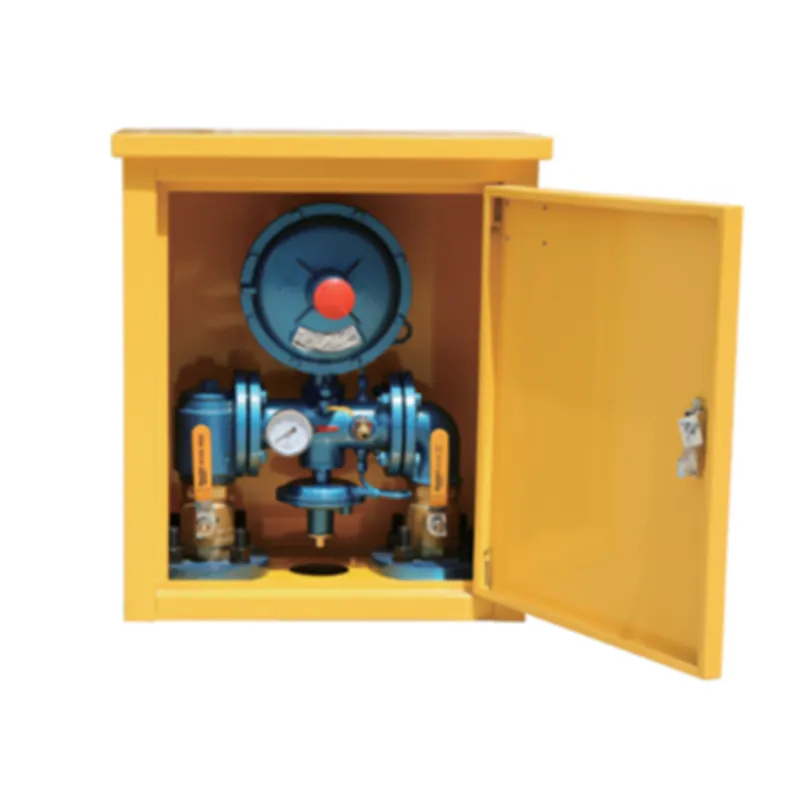
Oct . 12, 2024 21:43
Back to list
pressure regulating device
Understanding Pressure Regulating Devices Importance, Types, and Applications
Pressure regulating devices are essential components in various industries, ensuring the safe and efficient operation of systems that involve the use of gases or liquids under pressure. Their primary function is to maintain a specific pressure level within a system, preventing fluctuations that could lead to equipment damage, system inefficiency, or hazardous situations. In this article, we will delve into the significance of pressure regulating devices, the different types available, and their diverse applications in various fields.
The Importance of Pressure Regulation
In many industrial processes, maintaining a consistent pressure is crucial. Fluctuations in pressure can cause serious complications, such as equipment failure, production downtime, and quality control issues. For example, in the oil and gas industry, excessive pressure can lead to catastrophic failures in pipelines, resulting in spills or explosions. Similarly, in the pharmaceutical sector, maintaining the correct pressure ensures that products are manufactured consistently while adhering to stringent safety and quality standards. Thus, the importance of pressure regulating devices cannot be overstated, as they play a crucial role in maintaining system integrity, safety, and efficiency.
Types of Pressure Regulating Devices
Various types of pressure regulating devices are available, each designed to meet specific operational requirements. Below are some of the most common types
1. Pressure Regulators These are perhaps the most widely recognized pressure regulating devices. They automatically adjust the downstream pressure in relation to changes in upstream pressure, ensuring that the desired pressure is maintained. They are often used in gas distribution systems, such as natural gas lines.
2. Pressure Relief Valves While primarily designed to prevent overpressure conditions, pressure relief valves also play a regulatory role. They open to release excess pressure when it exceeds a certain threshold, thus protecting system components from damage. These valves are crucial in systems such as boilers and storage tanks.
3. Flow Control Valves These devices regulate the flow of liquids or gases in a system. They indirectly control pressure by adjusting the flow rate, which, in turn, influences pressure levels downstream. Flow control valves are common in water supply systems, chemical processing, and manufacturing.
4. Back-pressure Regulators These devices manage the pressure at the outlet side of a system. By providing a means to maintain a certain level of pressure upstream, back-pressure regulators are vital in processes where consistent upstream conditions are necessary, such as in reactors and separation units.
pressure regulating device

Applications of Pressure Regulating Devices
The applications of pressure regulating devices are extensive and varied
1. Oil and Gas Industry Ensuring the safe transport and processing of oil and gas involves maintaining precise pressure levels, making pressure regulators and relief valves essential in pipelines and refining processes.
2. Manufacturing In manufacturing processes, especially those involving compressed air or hydraulic systems, pressure regulation is critical to ensure the proper operation of machinery and to maintain product quality.
3. Pharmaceuticals Consistent pressure levels in the production of medicines are vital for both efficacy and patient safety. Pressure regulating devices help maintain these levels throughout the manufacturing process.
4. HVAC Systems In heating, ventilation, and air conditioning systems, pressure regulators ensure the correct airflow and temperature by managing the pressure of refrigerants and air.
5. Food and Beverage Industry Maintaining specific pressure conditions in processes like carbonation or pasteurization is vital to product quality and safety. Pressure regulating devices play a vital role in these processes.
Conclusion
Pressure regulating devices are integral to the safe and efficient operation of various systems across multiple industries. By maintaining consistent pressure levels, they help prevent equipment failures and ensure high-quality production standards. Understanding the different types of pressure regulating devices and their applications is crucial for professionals in engineering, manufacturing, and safety management. As industries continue to evolve and technology advances, the importance of reliable pressure regulation will only grow, highlighting the critical nature of these devices in modern infrastructure and manufacturing processes.
Latest news
-
Safety Valve Spring-Loaded Design Overpressure ProtectionNewsJul.25,2025
-
Precision Voltage Regulator AC5 Accuracy Grade PerformanceNewsJul.25,2025
-
Natural Gas Pressure Regulating Skid Industrial Pipeline ApplicationsNewsJul.25,2025
-
Natural Gas Filter Stainless Steel Mesh Element DesignNewsJul.25,2025
-
Gas Pressure Regulator Valve Direct-Acting Spring-Loaded DesignNewsJul.25,2025
-
Decompression Equipment Multi-Stage Heat Exchange System DesignNewsJul.25,2025

